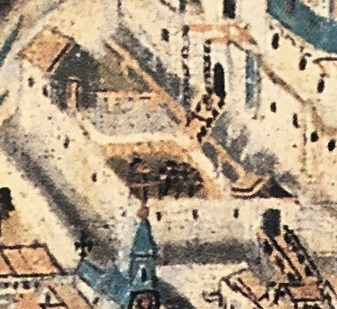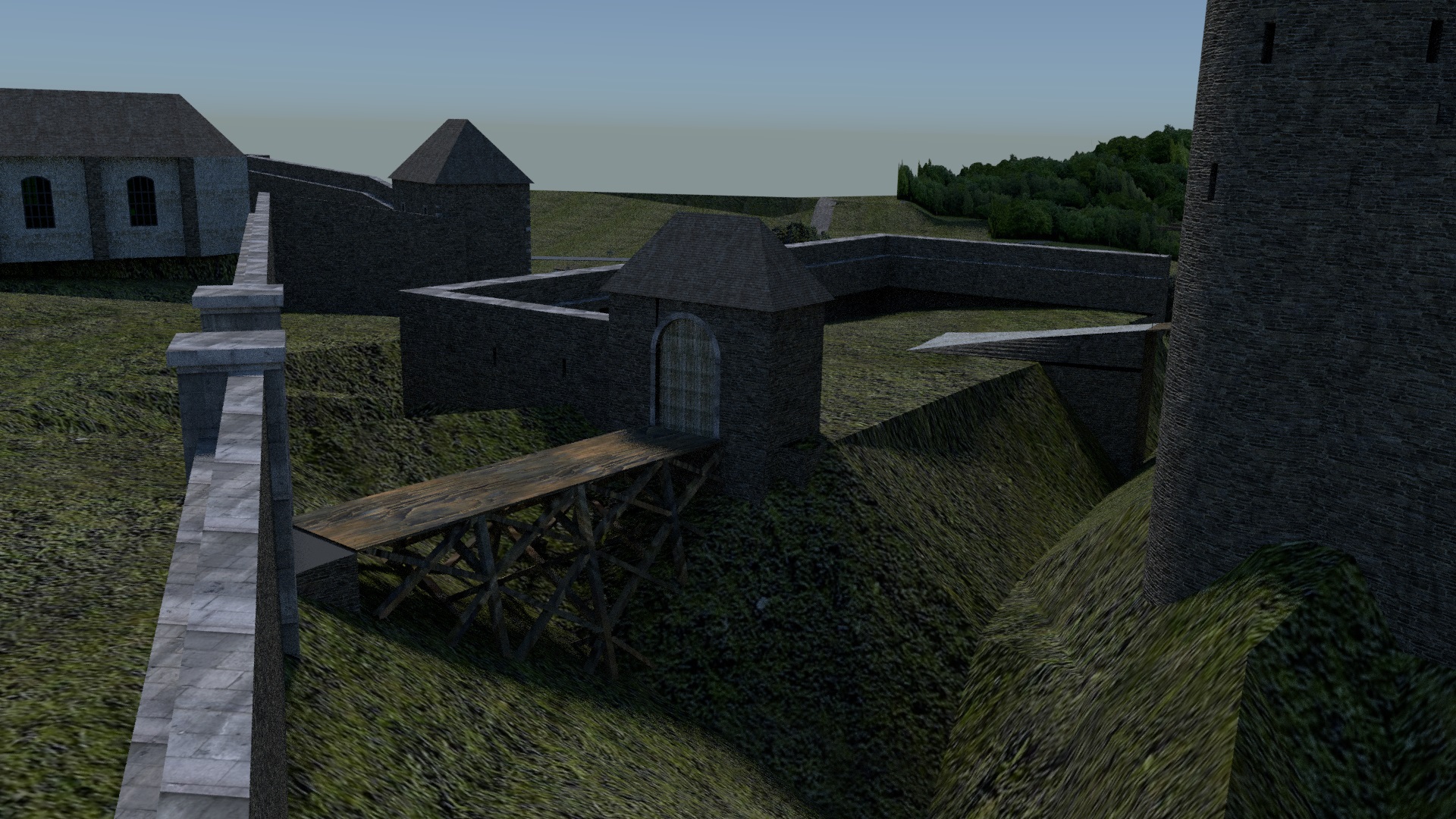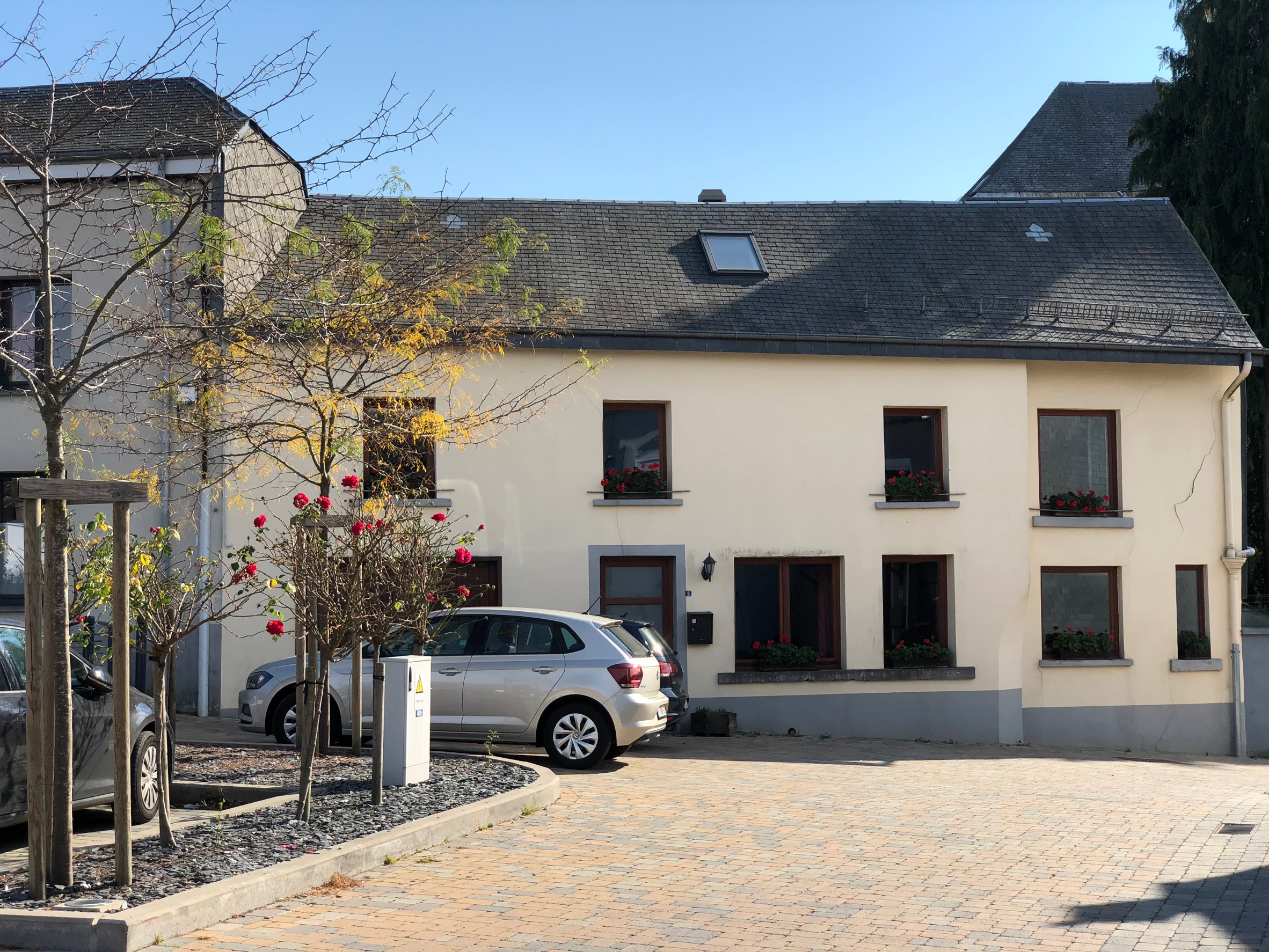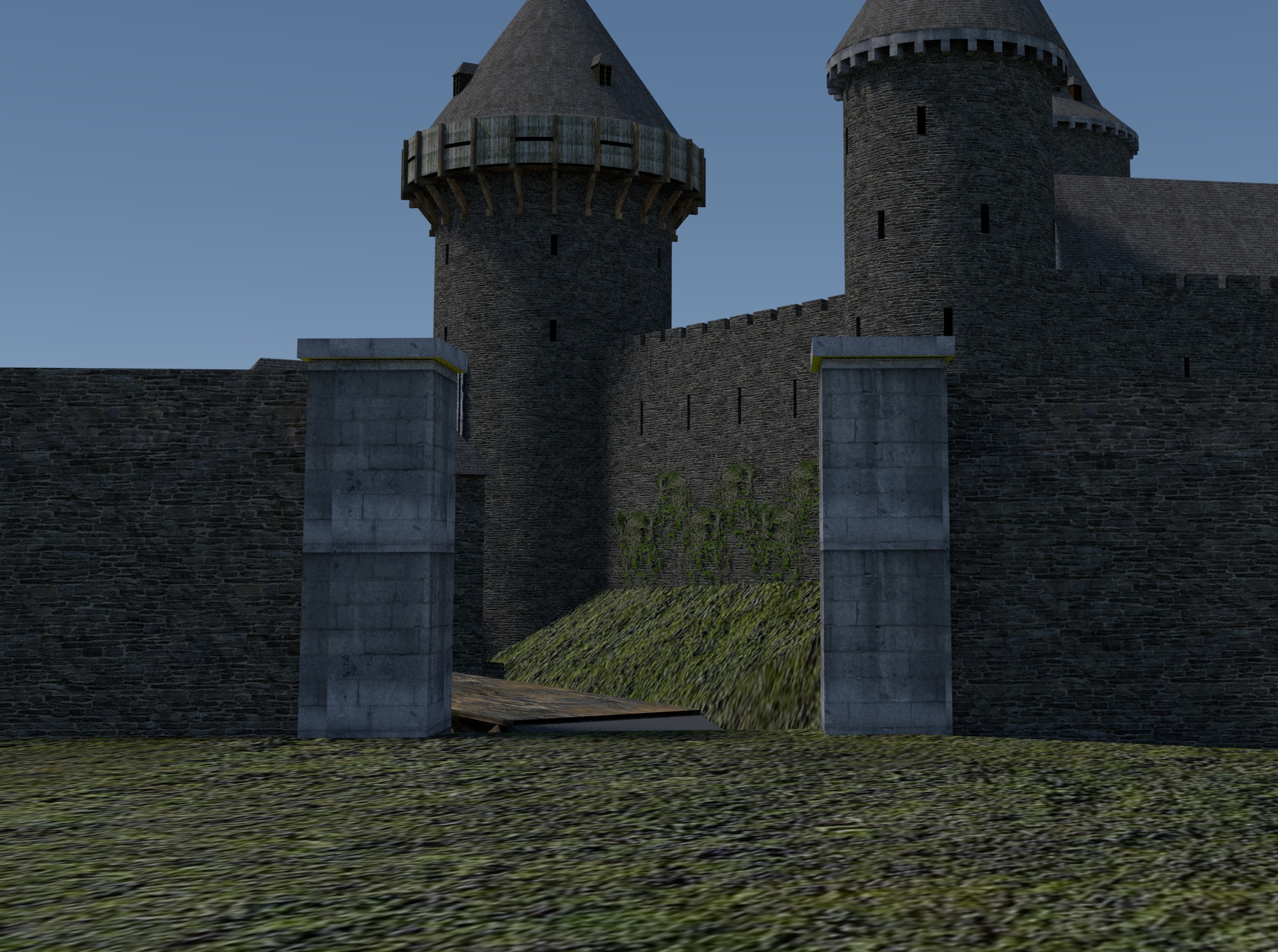This fortified place called "The Lombard" was the first obstacle for the attacker. He played the role of castle to protect the entrance with drawbridge of the castle. The whole was surrounded by walls except the castle side to leave the besieger uncovered. The Lombard was reached via a bridge with 3 trestles (visible on the map of Arenberg) and a fortified gate (Fig. 18) . The only building identified on this work is a barn whose presence is still unexplained today. This place owes its name to financiers and merchants of Italian origin who settled usually at the entrance of the castles with their currency exchange and loans at the service of the bourgeois or lords themselves.
 |
|
 |
| Fig.18 - Thee "Lombard" Source : Arenberg Map 1609 |
Fig.19 - Hypothesis on its orientation Source : "Le château retrouvé" de Christian Kellen, 2010. Weyrich Editions |
Fig.20 - The bridge on 3 easels and the fortified gate Source : Blender 3D model of the author |
As mentioned above, the orientation of Lombard remains to this day a mystery not clearly elucidated (Fig. 19).
The hypothesis taken here in the analysis of the Arenberg map is an orientation parallel to the front side of the castle with an entrance in the axis of the rue des Fossés (Fig. 21) . This differs from the vision of Messrs Geubel and Gourdet where this position is perpendicular to the castle with an entrance corresponding to the street of the castle. By virtually projecting this entry of "Lombard" on the current streets, we see the correspondence with the house of Mr Laurent. This comparison shows in the background the position of the Tower recently discovered in the gardens of Dr. Simeon and the entrance tower located opposite the vicarial house. The roof of the provost is also visible where we see the roof of the presbytery today. No data is available for the gate architecture giving access to the trestle bridge. Two fortified doors at the ends of the same bridge would not make much sense at this inaccessible place. At most we can imagine a "classic" wooden door to close the village. Pure hypothesis.
(Swing the mouse "in" and "out" on the next image to see the comparison)

